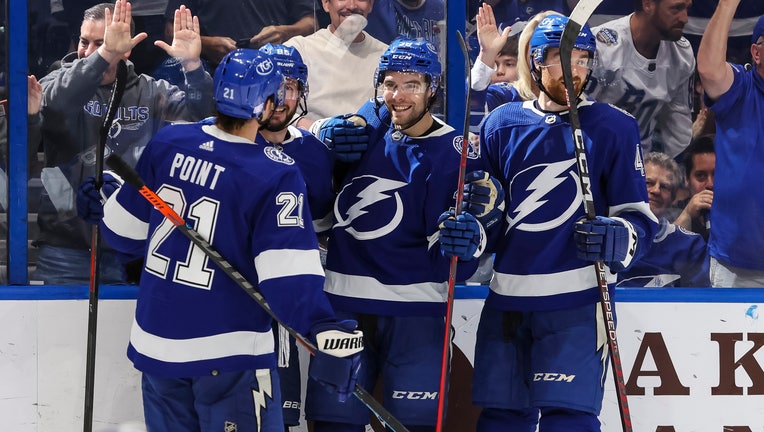Shooting percentage (SH%) is one of the most fascinating statistics in the NHL. The rate is dividing the shots on goal that go in the net by the total shots on goal. Often, shooting percentage helps predict future goal-scoring outcomes. Plus, it measures things like luck or shooting talent. When a player consistently posts a high shooting percentage, this typically means they are a talented shooter not driven by luck. However, players who experience outlier seasons in their shooting percentage often have a career year, then regress to the mean the following season.

Over the past three seasons, the Tampa Bay Lightning have a player in the top three for shooting percentage. That player is 50-goal center Brayden Point. The Lightning forward ranks third in shooting percentage behind Andrei Kuzmenko and Leon Draisaitl at 19.53%. Is Point one of the luckiest players in the league due to his high shooting percentage and is his conversion rate sustainable? Is he carried by his linemate Nikita Kucherov, one of the NHL’s best passers? Let’s dive deeper to answer these questions surrounding Point’s high shooting percentage.
Contextualizing Brayden Point’s High Shooting Percentage
Let’s look at Point’s shooting percentage in the last three seasons. In 2021-22, Point shot at 15.91%, the lowest of the three seasons. He followed that up with a career-best 51 goals and a 21.7% shooting percentage in 2022-23. Then, he continued his solid goal-scoring and shooting with 46 goals and a 20.09% shooting percentage. The numbers show he consistently shoots above 15%, and recorded back-to-back seasons with a shooting percentage above 20%. Furthermore, we can use individual expected goals (ixG) to measure his shooting talent (via EvolvingHockey).
Expected goals determine the odds of a shot resulting in a goal based on numerous variables. Individual expected goals are the sum of a player’s unblocked shot attempts, where each shot is assigned a unique value. Players who score more actual goals than expected goals tend to be talented shooters if they repeatedly outpace their expected rates. On the other hand, players who are staggered may have had lucky runs. Finally, players who fall below their expected results usually possess poor shooting talent.
As for Point, he’s outpaced his expected numbers in the last three seasons. In 2021-22, he scored 28 on 26.15 individual expected goals. Two seasons ago, he saw the widest gap between his actual and expected goals. Point notched 51 goals on 39.08 individual expected goals. He’s only eclipsed the 50-goal plateau once in his career, but Point followed up his career year with a 46-goal campaign in 2023-24. Moreover, he outpaced his expected results by more than ten actual goals, scoring 46 goals on 35.15 individual expected goals. On top of that, MoneyPuck’s predicted shooting talent model grades Point 15.5% above the league average shooting ability.
What This Means for Point

What do these percentages and ratios tell fans about Point as a goal-scorer? In short, despite playing with arguably the NHL’s best passer, Kucherov, he consistently outscores his expected results and maintains a high shooting percentage. No outlier results in his metrics over the past three years are a positive sign heading into this season. Point deserves recognition as a top-ten center and one of the NHL’s best goal-scorers today. His 125 goals rank tied for eighth league-wide over the past three seasons. What kind of production can fans expect from the All-Star forward this season?
Despite Jake Guentzel coming to town, Point should still eclipse the 40-goal mark in 2024-25. Guentzel is a perennial 5-on-5 play driver and will help Point and Kucherov maintain plenty of offensive zone time. He won’t take much offense away from the Lightning’s two stars but rather help contribute to the mix. Point has seen a spike in his goal-scoring over the past two seasons. In addition, he proved his 51-goal campaign and high shooting percentage was not a fluke.





